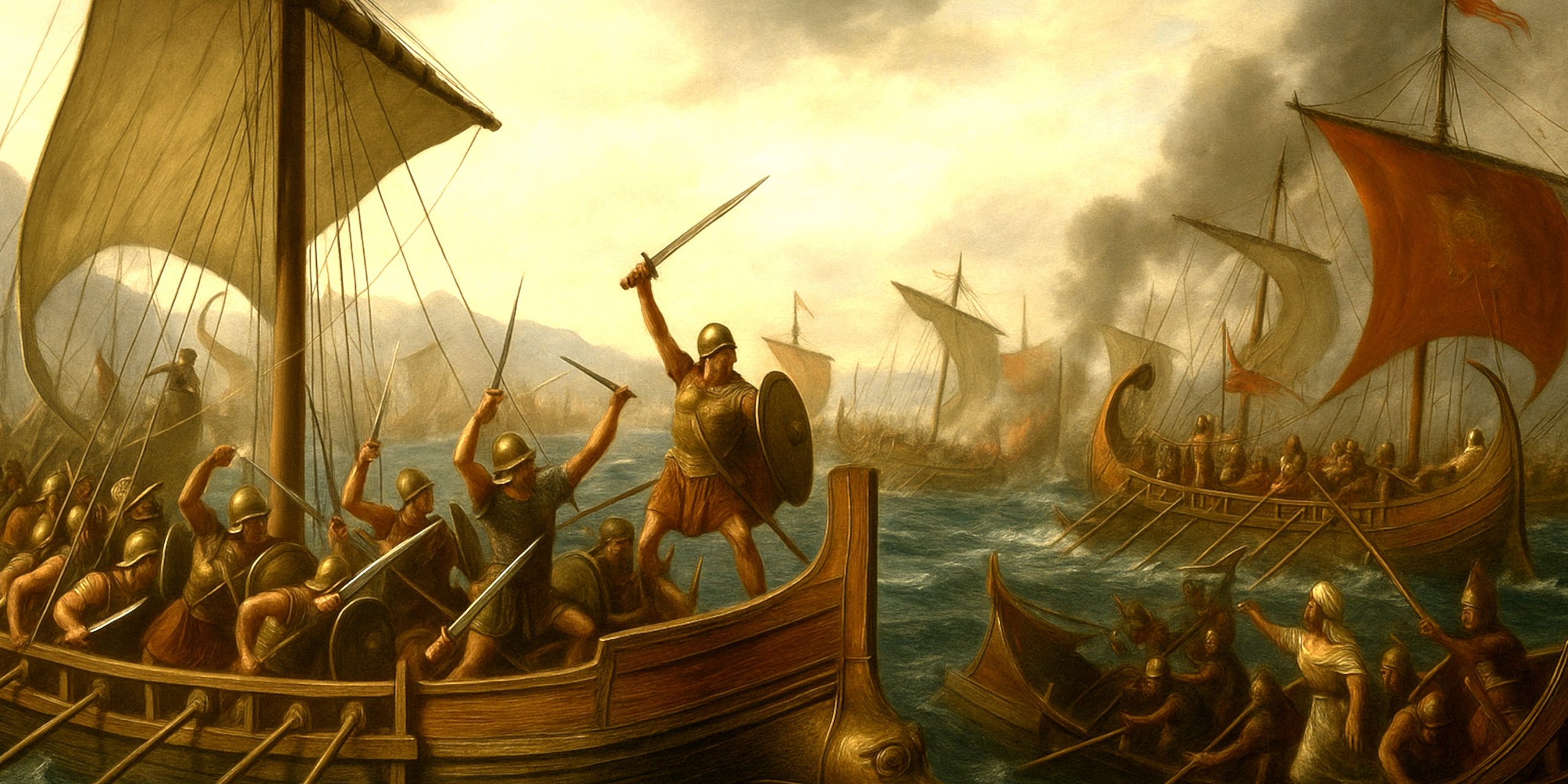
The Battle of Salamis in 480 BC was one of those rare turning points in history where guile outweighed brute force. A patchwork alliance of Greek city states, already bloodied at Thermopylae and Artemisium, lured the Persian fleet of Xerxes into a narrow strait and pulled off a naval ambush that changed the course of the Greco-Persian Wars.
Forget the sheer size of the Persian force. This was about seamanship, discipline, and a flair for calculated audacity.
Forces at Salamis
To understand the scale, we need to strip away Herodotus’s flair for exaggeration. No, Xerxes did not have a fleet the size of a small continent, but the Persians still outnumbered the Greeks comfortably.
| Side | Estimated Ships | Composition | Notable Allies |
|---|---|---|---|
| Greek Alliance | 370–380 | Primarily triremes | Athens, Sparta, Corinth, Aegina, Megara |
| Persian Empire | 700–800 | Triremes and larger war galleys | Phoenicia, Egypt, Cyprus, Ionia |
The Greeks had fewer ships but a home advantage: they knew the channels, currents, and treacherous bottlenecks of the Salamis straits.
Leaders and Troop Composition
| Side | Leaders | Notes |
|---|---|---|
| Greek Alliance | Themistocles (Athens), Eurybiades (Sparta) | Themistocles was the brain, Eurybiades technically in command but more of a figurehead. |
| Persian Empire | Xerxes I (overall), Ariabignes (Phoenician commander, killed in action), Artemisia I of Caria | Xerxes watched from shore, essentially as an ancient armchair admiral. Artemisia was the rare commander who emerged with her reputation enhanced. |
Shipboard Troops
- Greek triremes carried around 170 rowers, 10–20 hoplites, and a handful of archers.
- Persian ships carried similar crews but relied more on archers and marines from their vast empire.
Arms and Armour
This was not a clash of floating siege engines. Salamis was fought at ramming distance, where bronze-shod prows did the killing. Once ships were entangled, boarding actions turned the battle into miniature land skirmishes.
- Greek Hoplites:
- Persian Marines:
This imbalance mattered. A hoplite with a kopis was more lethal in close quarters than a Persian marine in wicker armour.
Archaeology
Salamis leaves little in the way of surviving wrecks, which is no surprise given that ancient naval debris tends to rot, sink, or get repurposed. But archaeologists have surveyed the straits and found trireme rams, naval anchors, and fragments of weaponry consistent with the era.
The island of Salamis itself has produced pottery with naval themes, and naval bases like Piraeus give us a sense of how Athens prepared its fleet. The trireme reconstruction Olympias has also given historians practical insight into how manoeuvrable these ships could be in tight waters.
Timeline of the Battle
- Pre-battle (480 BC): After Thermopylae, Xerxes advanced into central Greece. Athens was evacuated, its population taking refuge in Salamis.
- Persian fleet arrives: Anchors near Phaleron, preparing to crush the Greek navy.
- Themistocles’ ruse: Sends a message to Xerxes claiming some Greeks plan to desert, luring Persians into the straits.
- Dawn, battle day: Persian fleet enters the narrows. Their superior numbers become a hindrance.
- First engagements: Greeks ram and disable the leading Persian ships.
- Chaos in confined waters: Persian ships collide with each other, losing cohesion.
- Ariabignes killed: Persian morale weakens.
- Artemisia’s ruse: Famously rammed another Persian ship to escape pursuit, fooling Greeks into thinking she was an ally.
- Persian retreat: Remaining ships fall back. Xerxes, watching from his throne on shore, is forced to accept disaster.
Contemporary Voices
Herodotus, ever the raconteur, could not resist adding colour:
“It was said that Xerxes leapt up three times from his seat, in fear for his army.”
Aeschylus, who actually fought at Salamis, was more poetic in The Persians:
“There was shouting, and all at once a mighty echo rang back from the island cliffs.”
The chorus of triremes striking together, in other words, was not just noise but destiny.
Legacy
The Battle of Salamis was not simply a naval skirmish. It was a strategic masterpiece that stopped Persia’s advance, ensured Greek independence, and set the stage for Western political development as we know it.
Without Salamis, democracy might have ended up a failed Athenian experiment rather than a persistent idea. Instead, Themistocles and his compatriots proved that sometimes fewer ships, handled with cunning, trump imperial hubris.
The dry epilogue? Xerxes went home. The Greeks stayed noisy, argumentative, and infuriatingly democratic. History, one might argue, has been living with the consequences ever since.
Watch the documentary:
